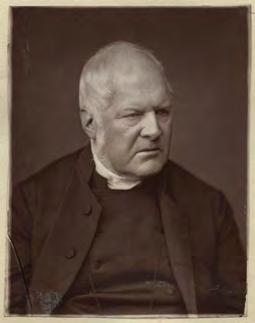
3 minute read
The Rejected Plan; by Chris
By Chris Weston
Although only Norwich Thorpe Railway Station now remains, Norwich once had two more located around its boundary. Norwich (Victoria) was adjacent to today’s Queens Road and Norwich (City) in the Barn Road & Pitt Street area.
Advertisement
By the late 1800’s, the Lynn & Fakenham Railway Company already operated a route from Kings Lynn to Fakenham. But on 21st November 1879, the company announced in the London Gazette, its wish to reach Norwich. To achieve this, a new line from Melton Constable to Heigham just west of the city. Their ‘prize’ would therefore be Norwich (City Station) which eventually opened in December 1882. But only a year later, on 26th November 1880, they announced a future plan to extend its line still further into the heart of Norwich by promoting The City of Norwich Central Station and Railway. From City station, this would follow the River Wensum on a high embankment, before cutting through the grounds of Norwich Cathedral to reach a terminus mid-way between the Cathedral and the historic Castle Mound. Looking at the diagram below, it seems a likely project? So on 27th November 1880, a Lynn and Fakenham Railway Company engineer duly attended the monthly Norwich Cathedral Chapter meeting, to explain a new proposal. Its contents revealed that if approved, demolition of the Ethelbert Gate would be necessary for construction of a new railway line. Hence, the future tranquility of Norwich’s Cathedral Close, would vanish, forever! Meyrick Goulburn, then Dean of Norwich, was immediately outraged and referred to the proposal as "this horrid railway". He could also foresee that not only would the plan remove the Ethelbert Gate (built in 1272 and still used today), but a new river crossing might be necessary near Pull’s Ferry. If passed, the plan also included building a new embankment between 18 & 25 feet high, immediately in front of the gateway, entirely isolating it from the rest of the precincts and the Close. It would therefore be enclosed in a narrow space between the river and the embankment, entirely destroying all the beauties of the spot which hitherto had been so much appreciated. And after the Dean had denounced the entire scheme in his capacity as Cathedral ‘Guardian’, the engineer withdrew. So from then onwards and also through most of the following year, he waged the greatest campaign of his career to stop it. Goulburn had seen the plan showing the proposed line but after representations to the Great Eastern Railway Co., thought he’d persuaded the company to withdraw their proposal. In November 1881 however, the plan was revived and Goulburn sped into action. He requested Mayor Hunter to "consult with the City Council" but after a long and arduous campaign lasting well into 1882, the Bill by which it would go ahead if agreed, was withdrawn and The Close had been saved. Dean Goulburn may not have realised that also ‘behind the scenes and backing his objection’ strong feelings against it were not confined to Norwich or Norfolk but extended all over the country. And ever since, people have enjoyed the opportunity to “make tracks” through the Close when walking to or from work, as an alternative to the nearby busy and noisy Prince of Wales Road!
© Chris Weston, April 2021
Dean Edward Meyrick Goulburn (1818 – 1897)
BUSINESS SERVICES PROVIDERS: We’re already working on the August/September edition!
To reach new clients during Q4, 2021, best start advertising with us NOW. Just like you, the people you’d like reach are reading this magazine... “LOCAL ADVERTISING IS PROVEN TO WORK!”
(take a look at the testimonials on our website) We create professional-looking artwork FREE of charge for new clients and will give you best advice and guidance should you require assistance... tracey@wacbook.co.uk | T: 01603 717681







